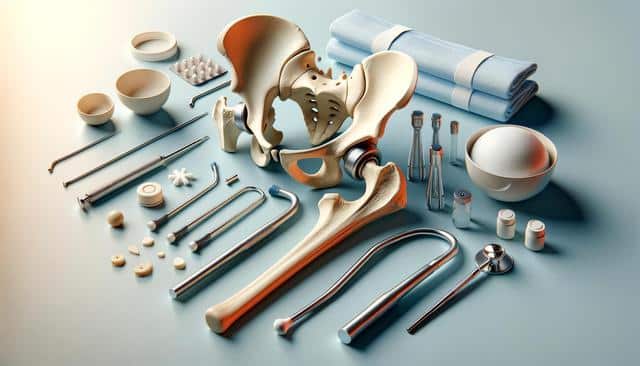
Hip Replacement Surgery in Seniors: What to Know
Understanding Hip Replacement in Older Adults
Hip replacement surgery is a common medical procedure for seniors experiencing chronic hip pain, often due to arthritis or injury. As people age, wear and tear on joints can lead to reduced mobility and increased discomfort, making daily activities difficult. A hip replacement involves removing the damaged part of the hip joint and replacing it with artificial components designed to function like a natural joint. This procedure helps improve movement and quality of life for many older adults.
While the surgery can offer significant benefits, it’s essential to understand the risks and considerations unique to older patients. Factors such as bone density, pre-existing health conditions, and recovery support play a role in the success of the procedure. Doctors typically perform a thorough assessment to determine if a patient is a good candidate for surgery. This includes physical exams, imaging tests, and discussions about the patient’s lifestyle and goals.
Preparing for Surgery
Before undergoing hip replacement surgery, preparation is key to ensuring a smooth experience. Seniors should work closely with their healthcare team to understand the steps involved and what to expect during the process. Preparation may include:
- Adjusting medications under medical guidance
- Completing pre-surgery physical therapy to strengthen muscles
- Arranging for help at home during recovery
- Setting up the living space to reduce fall risks
In addition, patients may need to undergo routine lab work and a full medical evaluation to ensure they are fit for anesthesia and surgery. Mental preparation is also important, as understanding the recovery timeline and setting realistic expectations can contribute to a more positive outcome.
The Procedure: What Happens in the Operating Room
Hip replacement surgery is typically performed under spinal or general anesthesia and takes about one to two hours. During the operation, the surgeon removes the damaged bone and cartilage and replaces them with metal, ceramic, or plastic parts that mimic the function of a healthy joint. There are different surgical approaches, including traditional and minimally invasive techniques, and the choice depends on the patient’s condition and the surgeon’s recommendation.
Minimally invasive procedures may offer benefits such as smaller incisions and shorter hospital stays, though they are not suitable for everyone. Following the procedure, patients usually spend a few days in the hospital for monitoring and to begin the early stages of physical therapy. Pain management, infection prevention, and monitoring for complications are top priorities during this time.
Recovery and Rehabilitation
Recovery from hip replacement surgery requires time, effort, and a strong support system. Most seniors begin walking with assistance within a day or two after surgery. Physical therapy becomes a central part of the recovery process, helping patients regain strength, flexibility, and balance. A typical recovery plan includes:
- Daily exercises guided by a physical therapist
- Gradual increase in walking and activity levels
- Monitoring wound healing and watching for signs of infection
- Regular follow-up visits with the surgeon
Full recovery can take several months, but many seniors experience a noticeable improvement in their ability to perform daily tasks within the first few weeks. It’s important to follow the healthcare team’s instructions closely to avoid complications and ensure the new joint functions properly.
Long-Term Outcomes and Lifestyle Adjustments
Hip replacement surgery can offer lasting relief and improved mobility for seniors, but it also requires ongoing care and attention. Patients are often advised to avoid high-impact activities like running or jumping, which can wear out the artificial joint. Instead, low-impact exercises such as swimming, walking, and cycling are encouraged to maintain joint health and overall fitness.
To protect the new joint and prevent injury, seniors may need to make changes at home such as installing grab bars, using raised toilet seats, and avoiding slippery floors. Regular check-ups help monitor the health of the implant and detect any early signs of wear. With proper care, a hip replacement can last 15 years or more, allowing older adults to stay active and independent for longer.
Conclusion: A Path to Greater Comfort and Mobility
For many seniors, hip replacement surgery opens the door to a more active and comfortable life. While the procedure involves careful planning and a commitment to recovery, the potential benefits often outweigh the challenges. With the support of experienced healthcare professionals, the right preparation, and a focus on safe rehabilitation, older adults can regain mobility and enjoy daily activities with less pain. It’s a journey that requires patience and dedication—but one that can lead to meaningful improvements in quality of life.


